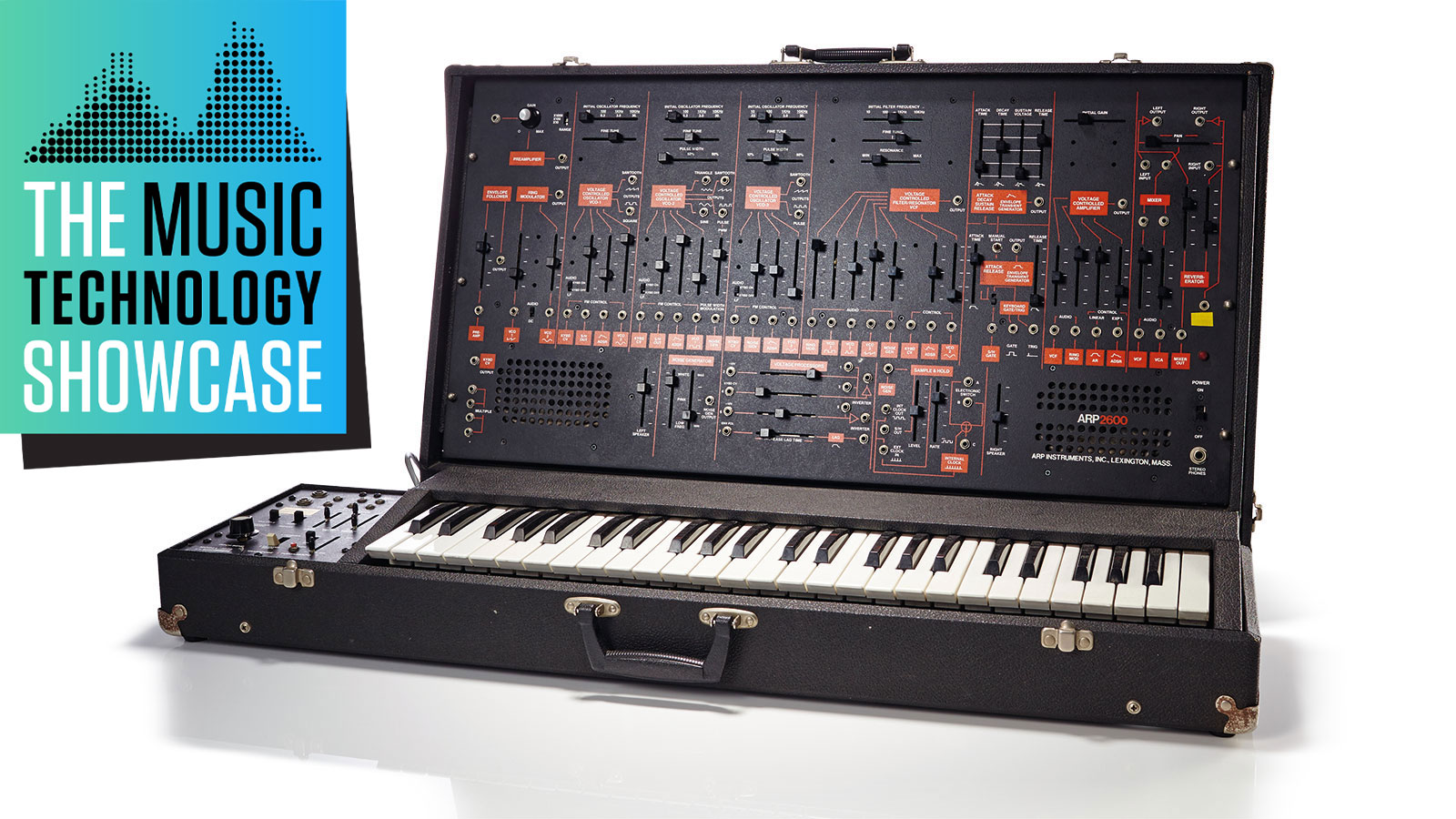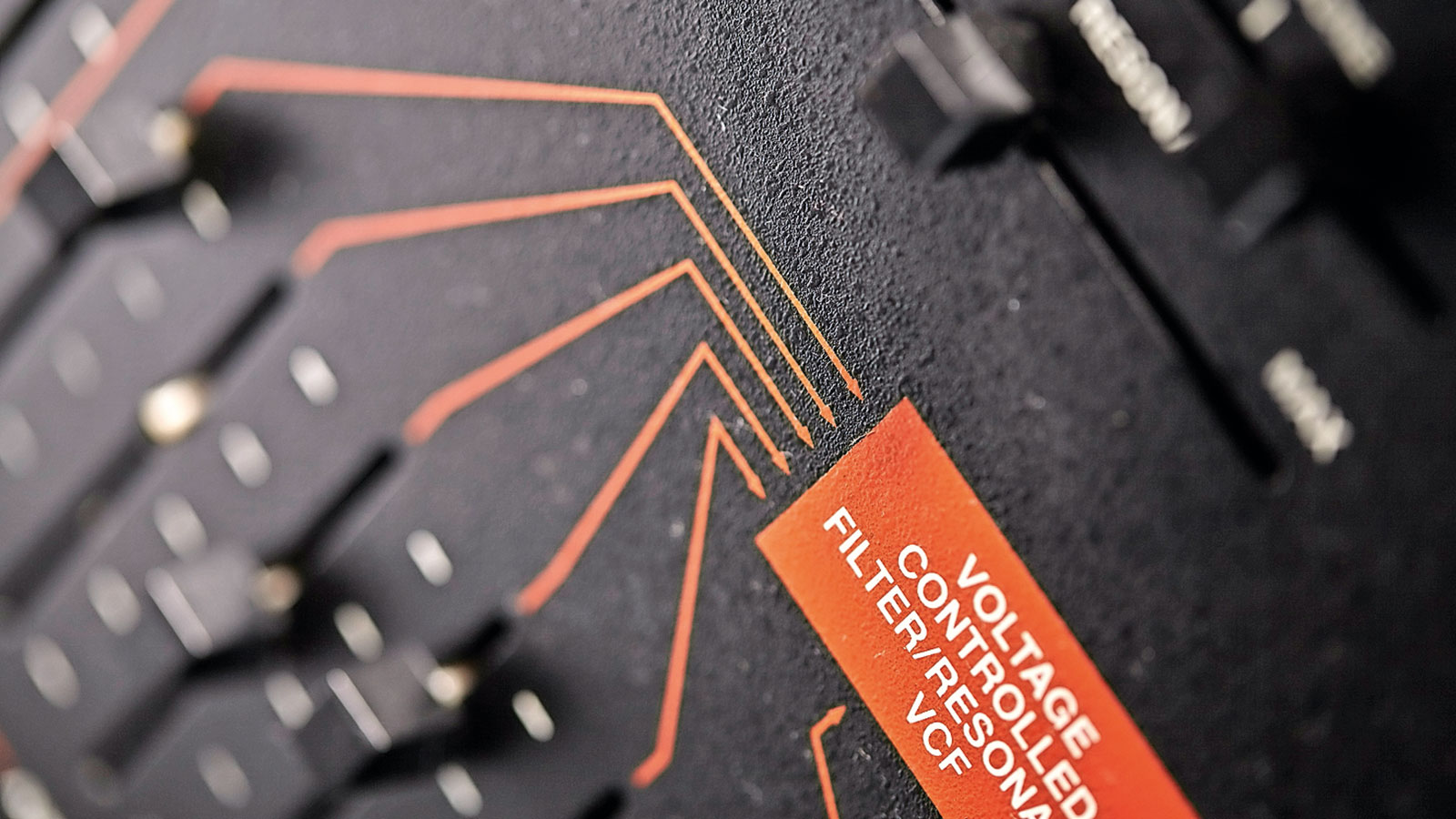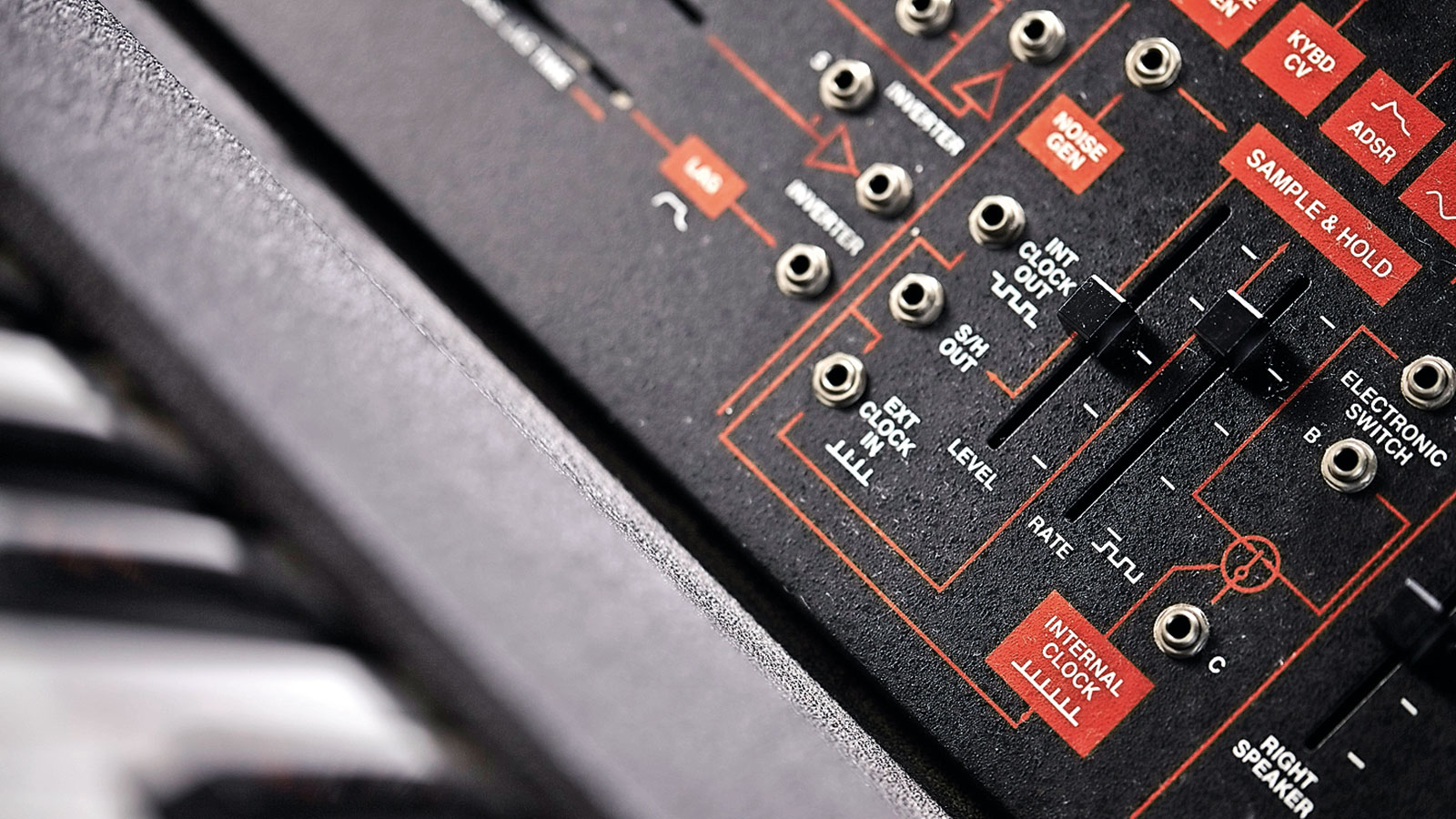Vintage music tech icons: ARP Instruments 2600
The first, and some still say best, alternative to studio-bound modular systems

Music Tech Showcase 2021: Brand loyalty is not a new phenomenon. Just as today’s pundits debate the merits of Mac versus Windows or Android versus iPhone, a battle for allegiance once raged between users of Moog’s synthesizers and those who preferred instruments made by ARP. Then, just as now, the debate was a powerful marketing tool.
ARP was founded by Alan R. Pearlman who, unlike other synthesizer pioneers of the day, emerged from a business background. As an entrepreneur, Pearlman saw an opportunity in the growing fascination with electronic music. Quick to realise the shortcomings of his competitors’ instruments, Pearlman resolved to make instruments upon which musicians could depend.
The first such instrument was the mighty ARP 2500 modular system, a massive wall of electronics that eschewed the patch cables favoured by Moog and Buchla for matrices of sliding switches. This allowed for a better view of the included modules, but resulted in crosstalk between the various components.
The 2500’s most important advantage – and one that would find its way into the portable 2600 – was tuning stability. In 1970 dodgy tuning was considered par for the course and synthesists had become resigned to constantly retuning and rescaling their oscillators. Pearlman’s IC-based oscillators, however, were a grand improvement over that of Moog’s – a fact the company was not hesitant to mention in advertisements.
Designed with the idea of teaching students the basics of electronics music, the 2600 collects an assortment of synthesis functions into a single system
The 2500 sold in respectable numbers – for a modular synthesizer. Approximately 100 systems were built, ending up in the hands of big timers like Pete Townshend and Jimmy Page. An impressive system can be seen enabling communication with the aliens in the film Close Encounters of the Third Kind.
ARP attempted to bring the synthesizer down to earth – or the classroom, at any rate – with the 2600. Designed with the idea of teaching students the basics of electronics music, the 2600 collects a healthy assortment of synthesis functions into a single compact system.
Introduced at the same industry show as the Minimoog, it too provided a pre-patched signal path so that students and musicians could simply plug in, switch on, and make an interesting noise. Unlike that of the Minimoog, the ARP’s signal path could be defeated by means of plugging patch leads into any of its multitudinous 1/8-inch jacks.
Want all the hottest music and gear news, reviews, deals, features and more, direct to your inbox? Sign up here.
By the time the 2600 debuted in 1970, most people had been exposed to the sound of synthesizers (if only through the popular electronic novelty records of the day), but very few had any idea at all about how they worked. This made any synthesizer a hard sell – even one adorned with a block diagram silk-screened across its front panel.
To combat this lack of familiarity, ARP sent David Friend and future Utopian Roger Powell on a cross-country trek in order to personally demonstrate the 2600 to potential retailers. Most were unimpressed, but popular American musical instrument store Sam Ash gave ARP a chance and eventually others followed.

A little patch of heaven
The 2600 went through a number of internal and external design changes over its 11-year lifespan, the most significant of which are discussed elsewhere in this review, though the architecture and panel layout remained consistent throughout.
Meant to be an all-in-one solution, the 2600 attaches to an external keyboard via a chunky umbilical cable. That isn’t to say that you should pass up the opportunity to buy one sans keyboard – any Volts-per-octave CV keyboard will likely do the trick, as will most analogue sequencers (ARP’s own 1601 springs to mind). In fact, with its 1/8-inch jacks, the 2600 is a natural companion to any modern Eurorack modular system.
Processing external signals through its architecture is one of the great joys of owning a 2600. The top-left ‘module’ is dedicated to the task, with a built-in preamp pre-patched to an envelope follower. A large Gain knob and Range switch facilitate incoming signal levels.
The preamp and envelope follower are handily situated next to the instrument’s ring modulator, its inputs hardwired behind the scenes to a saw wave from VCO 1 and a sine from VCO 2, with sliders controlling each level. As with all of the 2600’s normalised connections, you can defeat this condition simply by patching a cable into the associated inputs.
Processing external signals through its architecture is one of the great joys of owning a 2600
In what would become a familiar arrangement, the 2600 sports three voltage-controlled oscillators, one of which is most likely to be used as an LFO. All three oscillators provide sawtooth waves. VCO 1 additionally offers a square wave, while VCO 3 adds a pulse wave.
VCO 2 makes the most likely LFO candidate with its complement of pulse, triangle and sine waves. Both VCO 2 and 3 allow you to adjust the pulse width, with VCO 2 offering the possibility of pulse width modulation.
All oscillators can be detached from keyboard control, and all of them offer a number of defeat-able hardwired frequency modulation sources, including keyboard CV, Sample & Hold, ADSR and another VCO.
A dedicated noise generator provides noise that ranges from ‘low frequency’ through pink on to white.
All 2600 models have a resonant low-pass filter with defeat-able hardwired audio inputs from the ring mod, VCOs, and noise generator. Default control inputs include keyboard, ADSR and VCO2. The filter’s sound differed depending on which era the instrument was made, as discussed in Model Behaviour, below.

All mod con(fusion)
The 2600 provides a pair of envelope generators, the aforementioned ADSR job and a two-stage (AR) variant. More modulation can be accessed via the excellent Sample & Hold section. It’s normalled to accept the noise generator as an input, and it can be clocked either internally or from an external source.
The 2600’s Electronic Switch is easy to overlook – but you shouldn’t. It sports three jacks, A, B, and C. Jack C is alternately connected to either jack A or B – never both at the same time. The switch’s jacks can act as inputs or outputs and the switching rate is determined by the same internal clock used for the sample & hold circuit. As the 2600 offers left and right outputs, the switch’s most obvious use is to facilitate auto-panning.
The Voltage Processors module is one of the 2600’s most powerful features. It offers a means by which signals may be mixed and inverted (to flip an envelope, for example) or by which lag may be added to a passing signal (most commonly for portamento effects). One nice touch: a quartet of interconnected jacks reside on the lower left edge of the panel. This is known as a ‘multiples’ and does nothing more or less important than connecting any inserted leads to all of the other three jacks.
The 2600 offers a lot of sonic potential. Even if it weren’t re-patchable, it would be a powerful instrument. The added flexibility makes it a limitless wonderland of experimental noises
As mentioned, the 2600 offers the possibility of stereo output. This makes perfect sense, given that the unit also includes a pair of speakers, the grills of which are situated on the extremes of the bottom third of the cabinet. Finally, a spring reverberator is available for adding a bit of simulated space (or more likely a metallic boing) to your signals.
Clearly, the 2600 offers a lot of sonic potential. Even if it weren’t re-patchable, it would be a powerful instrument. The added flexibility makes it a limitless wonderland of experimental noises, bettered only by a large modular system.
The 2600’s panel is designed with lots of space, good, sturdy controls and a clearly defined (and labelled) signal path. While some features will leave neophytes scratching their heads, the fact that it is sensibly pre-patched means that you can take the learning curve at your own speed.
Most importantly, the 2600 sounds fantastic. It’s lovely for sharp, clear bass sounds, and unbeatable when it comes to electronic percussion. Wild and woolly special effects are, of course, a 2600 specialty. A study in versatility, the 2600 can provide a lifetime’s worth of sonic exploration and inspiration.
At the time of writing, secondhand prices are skyrocketing. The 2600 has rightfully earned pride of place in the collections of synthesizer aficionados. A brilliant instrument on which to learn and play.
Verdict
It makes learning synthesis easy with all the character you’d expect from a legendary synth.
Original RRP £1,350 | Used from £4,000
Model Behaviour
The 2600 went through many redesigns, some more obvious than others. The initial run of between 50-100 units had bright blue panels and a wooden carrying handle that spanned the entire length of the instrument.
These ‘Blue Marvins’ (sometimes called ‘Blue Meanies’) were built in a garage before ARP moved production to a proper plant. They are reportedly quite difficult to repair. Additionally, there were a few of this design made in grey.
The Blue Marvin’s filter is the stuff of legend for all the wrong reasons. It was, as we’ve said, a little too similar to Moog’s patented transistor ladder design. Though no legal action was taken, ARP agreed to change the design, resulting in the flawed 4072. By this time, the 2600 was outfitted in its now-familiar Tolex case.
Eventually, the 2600 got a black and orange makeover and in 1980 ARP dropped the epoxy that had previously enshrouded the electronics, making them easier to service. Sadly this was near the end of the line for both 2600 and ARP itself.
Buying a used ARP Instruments 2600
What to know before splashing the cash for a second-hand 2600
1. According to renowned synth tech Mike Metz, the 2600s used a better grade of sliders than on other ARPs, but they are still a weak link. Expect to spend a little more having some of them replaced.
2. In most 2600s, the crucial circuits are potted in epoxy, making self-service nigh on impossible. Luckily, there are a few places that can sell and install NOS originals or repros, but they don’t come cheaply
3. The earliest ARPs used a filter design that looked too much like Moog’s, so it was changed. The resulting filter (4072), suffered from a design flaw that needlessly limited the high frequencies. Luckily, it can be fixed. If you think your 2600 sounds dull, talk to your service tech.


Future Music is the number one magazine for today's producers. Packed with technique and technology we'll help you make great new music. All-access artist interviews, in-depth gear reviews, essential production tutorials and much more. Every marvellous monthly edition features reliable reviews of the latest and greatest hardware and software technology and techniques, unparalleled advice, in-depth interviews, sensational free samples and so much more to improve the experience and outcome of your music-making.
